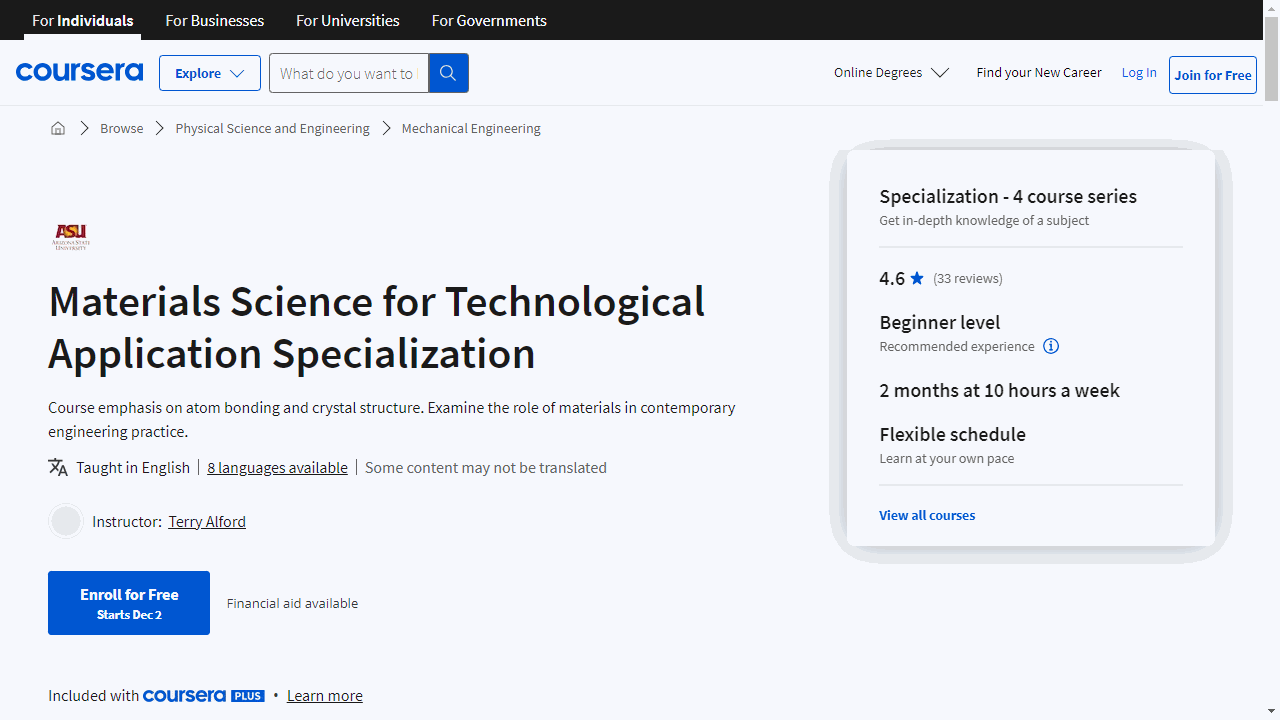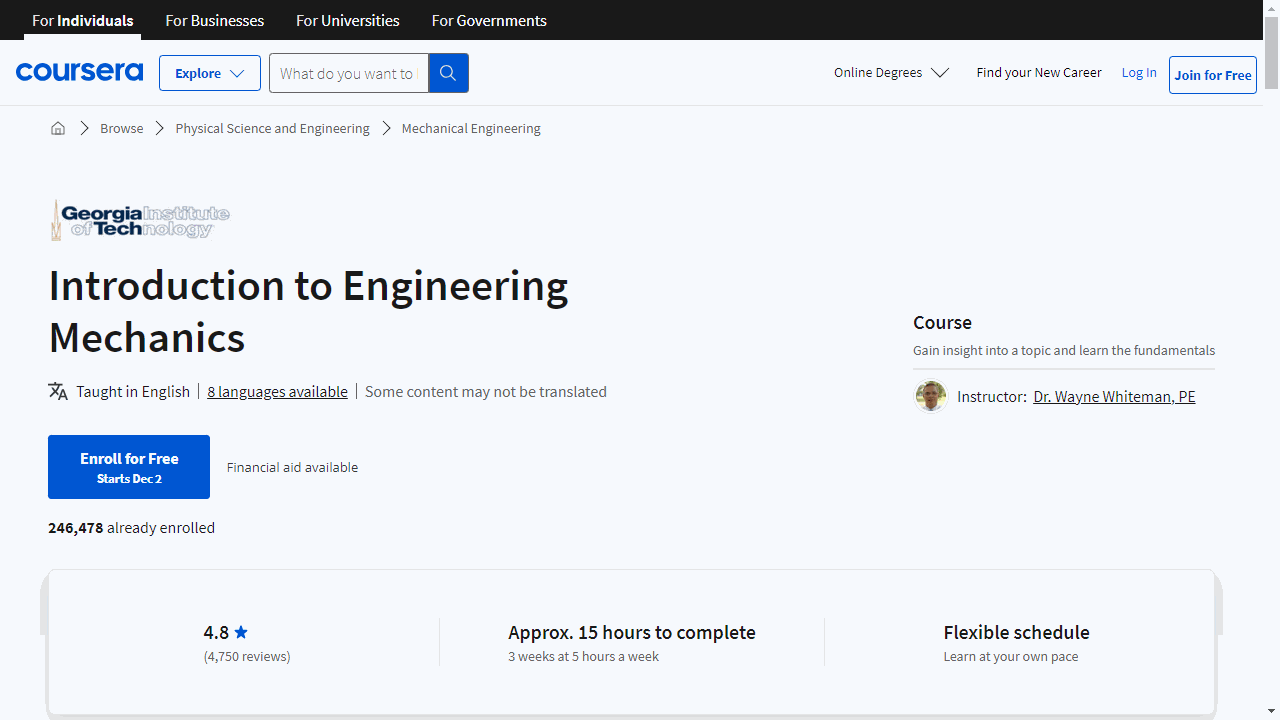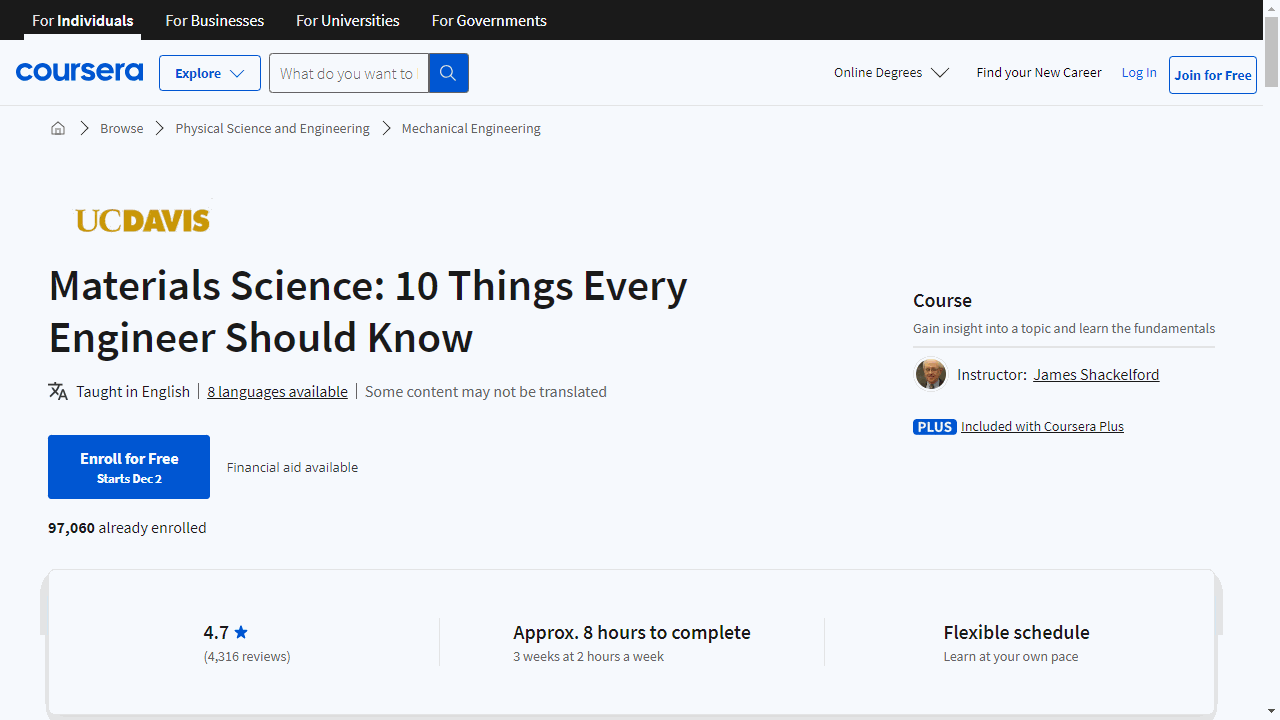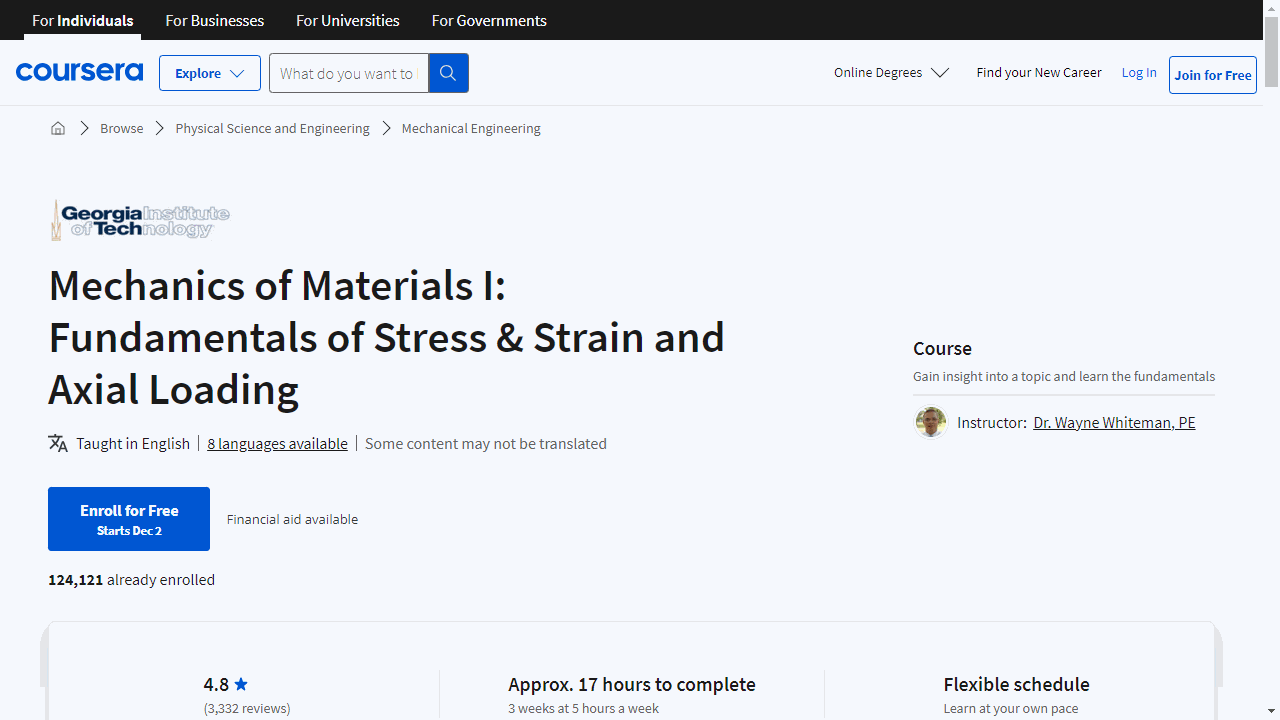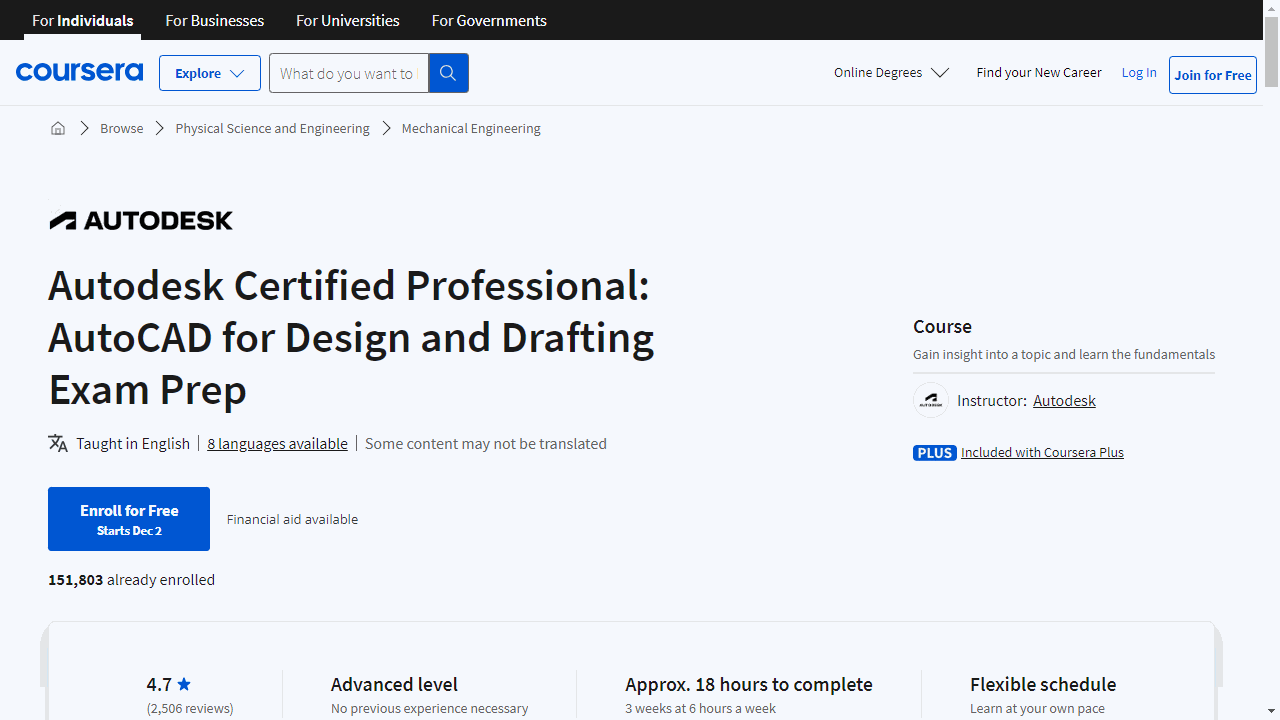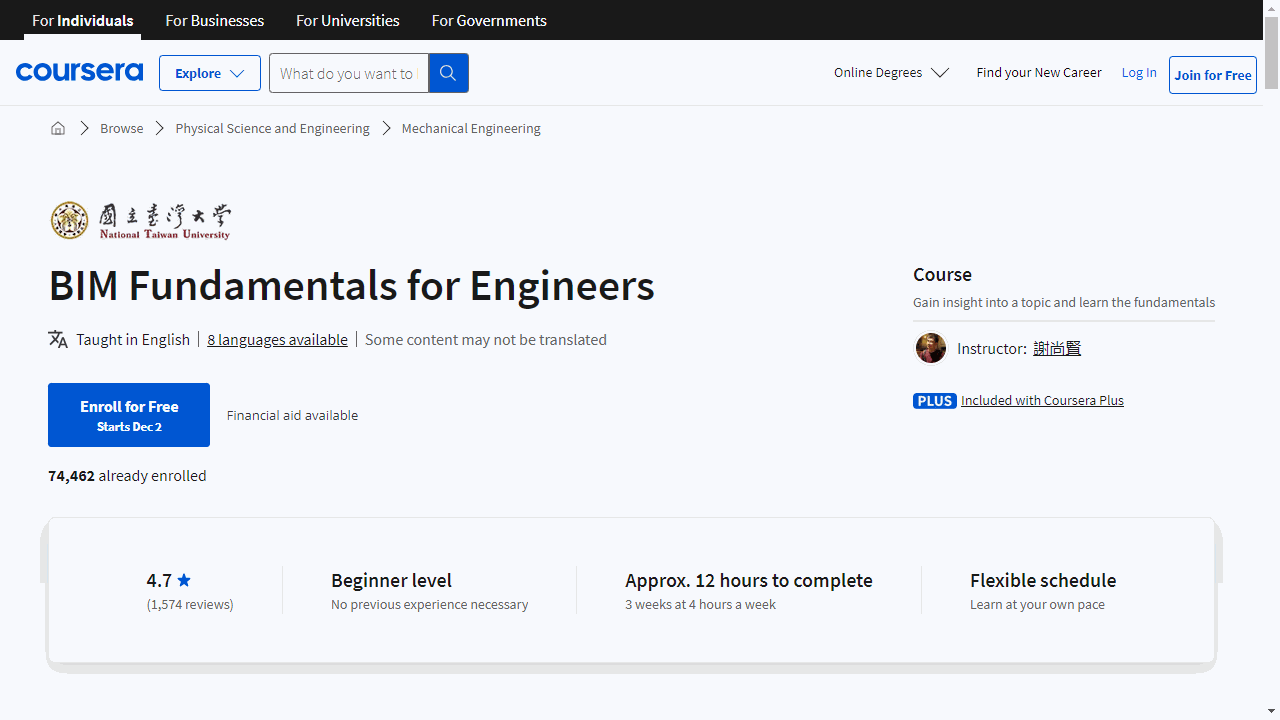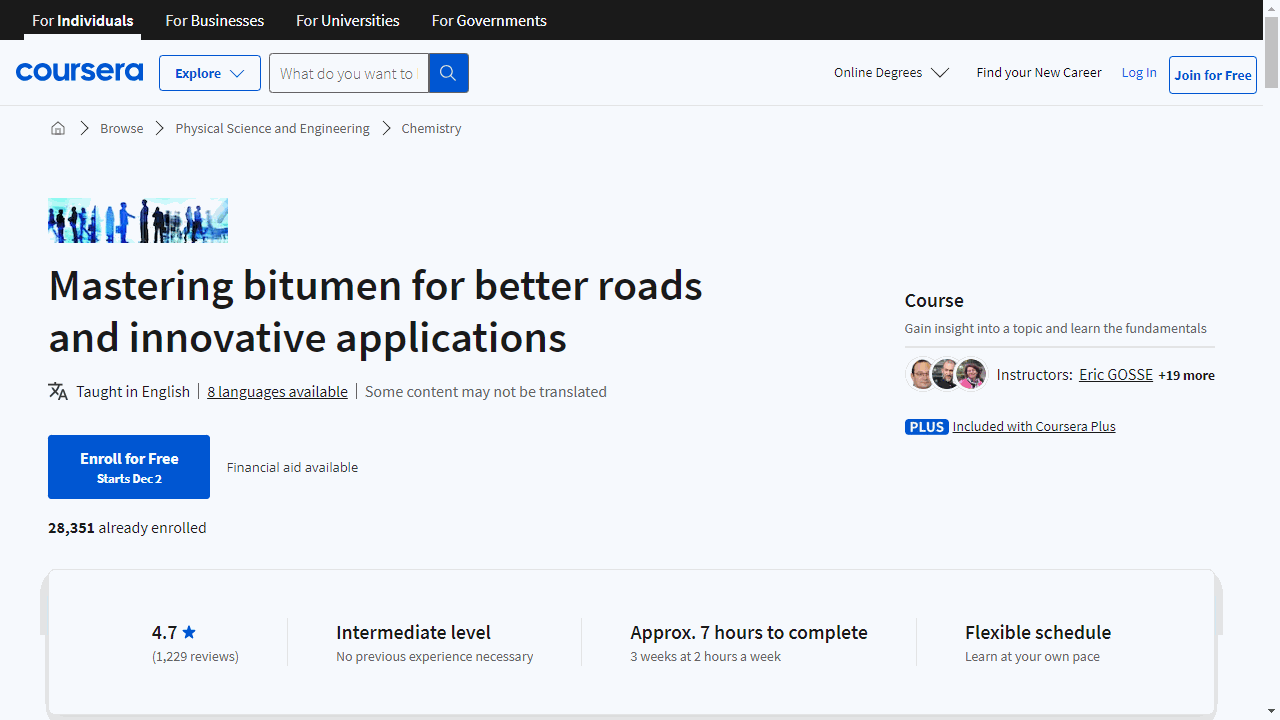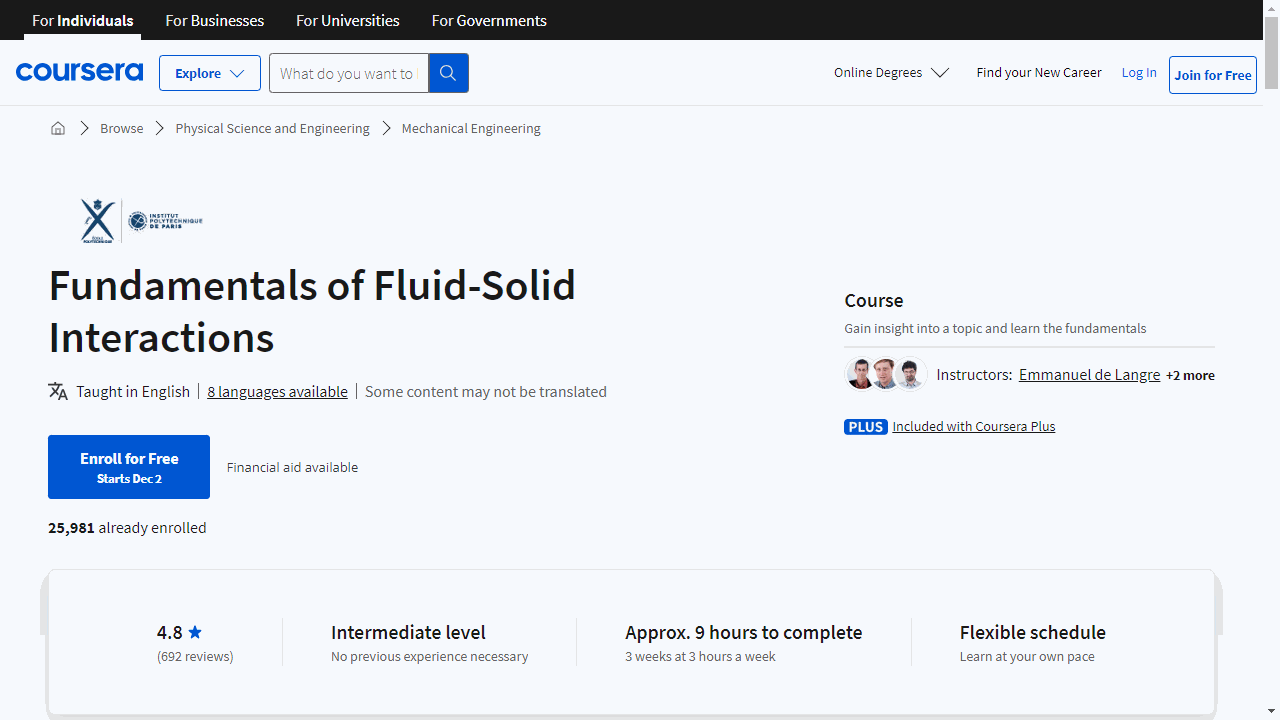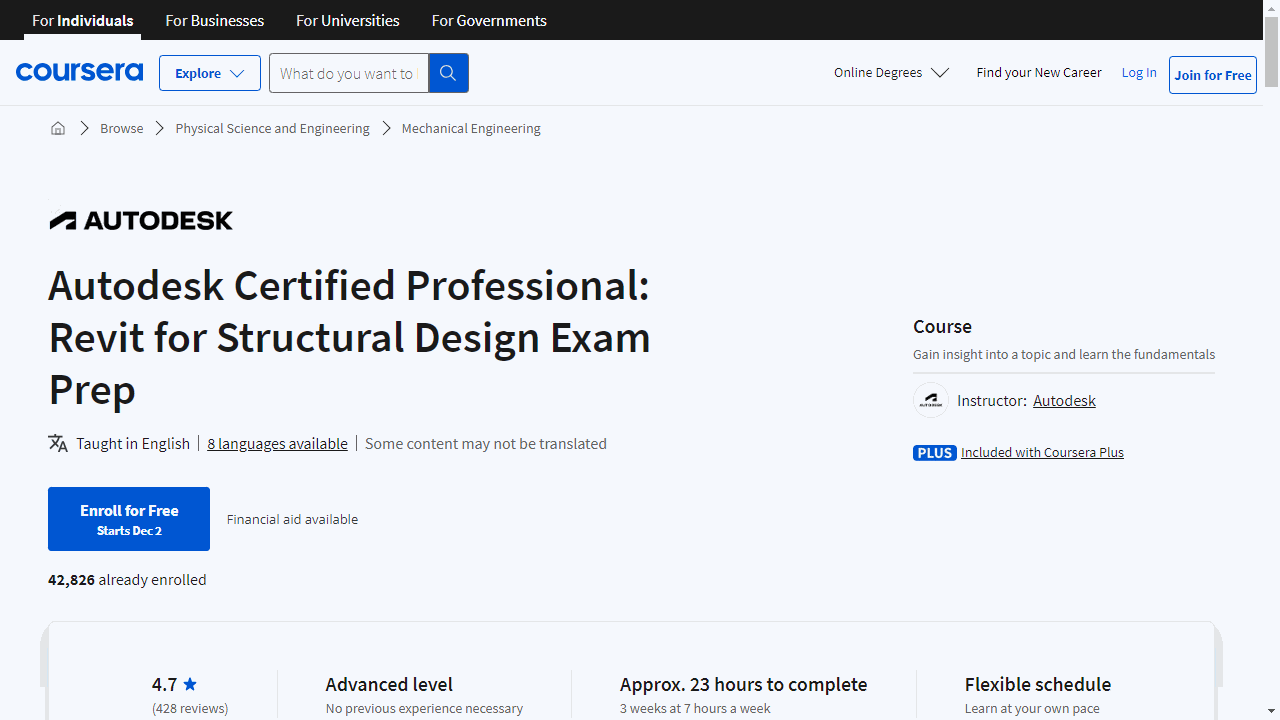Civil engineering is a vital field that shapes our world, from designing resilient structures to building efficient transportation systems.
Understanding the principles of civil engineering is crucial for anyone interested in building a sustainable and thriving future.
By learning civil engineering, you can gain valuable skills that are applicable to a wide range of industries and roles, from structural engineer to project manager.
Finding a quality civil engineering course on Coursera can be overwhelming, with so many options available.
You’re looking for a program that’s comprehensive, engaging, and taught by experts, but also fits your learning style and goals.
For the best civil engineering course overall on Coursera, we recommend the Construction Management Specialization by Columbia University.
This specialization is a practical guide through the essentials of construction management, taught by industry experts.
It covers topics such as project management, scheduling, cost estimating, finance, and sustainability, equipping you with the skills needed to lead successful construction projects.
While this is our top pick, there are other excellent civil engineering courses available on Coursera.
Keep reading to explore our recommendations for different areas of civil engineering, learning levels, and specific career paths.
Construction Management Specialization
If you’re eyeing a career in civil engineering with a focus on construction management, Columbia University’s “Construction Management Specialization” on Coursera is tailored for you.
This series of courses is a practical guide through the essentials of the field, taught by industry experts including Professor Ibrahim Odeh.
Dive into “Construction Project Management” to grasp the Project Development Cycle, Lean Project Delivery, and the application of Building Information Modeling (BIM).
You’ll learn to craft a Work Breakdown Structure, a cornerstone of project planning.
In “Construction Scheduling,” you’ll master the art of timing.
From bar charts to critical paths, this course equips you to create and manage precise project schedules, ensuring timely completion of construction tasks.
Budgeting skills are crucial, and “Construction Cost Estimating and Cost Control” hones yours.
It covers cost estimation from design to detailed phases and introduces cost control techniques, with a focus on the Earned Value Method for tracking budget adherence.
“Construction Finance” broadens your understanding of project economics, teaching you about interest rates and the significance of Cash Flow Diagrams.
It covers both vertical and horizontal construction finance, including public-private partnerships.
Lastly, “The Construction Industry: The Way Forward” offers insights into the industry’s challenges and trends.
You’ll explore how sustainability, urbanization, and technology like BIM are transforming construction.
Materials Science for Technological Application Specialization
This specialization, offered by Arizona State University, is a practical choice for civil engineers looking to master materials science.
Dive into “Introduction to Materials Science” to grasp how materials define our civilization and influence engineering advancements.
You’ll cover the basics, from atomic bonds to crystal structures, without getting bogged down in complex math.
This course is ideal if you’re aiming for a career in materials or chemical engineering.
“Crystal Structures and Properties of Metals” focuses on the relationship between atomic bonding and metal properties.
You’ll learn about cubic structures, Miller Indices, and how to interpret tensile tests—essential knowledge for understanding metal behavior in engineering structures.
In “Shape and Property Control of Metals I & II,” discover how shaping metals affects their properties.
The course introduces diffusion and dislocation concepts, teaching you how to manipulate material strength—a key skill for ensuring the durability of engineered structures.
Finally, “Phase Diagrams I & II” offers insights into using phase diagrams to predict material states and properties.
This course is particularly valuable for civil engineers who need to select the right materials for their projects based on temperature and composition.
Introduction to Engineering Mechanics
This Georgia Tech course lays the groundwork for understanding forces and equilibrium—key concepts in civil engineering.
Starting with the basics, you’ll learn what forces are and how to represent them in both 2D and 3D.
This helps you visualize how forces act in different scenarios.
You’ll then delve into particle equilibrium, where forces balance out, and systems of particles, applying your knowledge to solve real-world problems.
The course also demystifies moments—the rotational effects of forces.
You’ll learn how to calculate moments in 2D and 3D, essential for understanding how structures withstand twisting and turning forces.
As you progress, you’ll tackle equilibrium equations, exploring how to analyze various force systems.
You’ll study centroids, composite parts, and forces on surfaces, enhancing your ability to predict structural behavior.
Drawing free body diagrams, which map out all forces on an object, will become second nature to you.
These diagrams are crucial tools for visualizing and solving engineering problems.
In the final modules, you’ll apply your knowledge to solve complex 2D and 3D equilibrium problems, cementing your understanding of how forces interact in engineering contexts.
Throughout the course, practice problems, quizzes, and detailed PDFs support your learning.
Upon completion, you have the opportunity to earn a Georgia Tech badge, certificate, or CEUs, validating your expertise.
Materials Science: 10 Things Every Engineer Should Know
This course, from University of California, Davis, equips you with a comprehensive understanding of materials science, ensuring your engineering projects are safe, durable, and efficient.
You’ll start by exploring the six main categories of engineering materials, learning how their structures influence their properties.
This knowledge is essential for selecting the right materials for your projects.
The course then introduces you to crystallography and the electron microscope, tools that allow you to examine materials at the atomic level.
You’ll also delve into the Arrhenius relationship, which explains how temperature affects atomic vacancies and diffusion—key factors in material behavior.
Next, you’ll tackle dislocations and their role in plastic deformation, gaining insights into material shaping processes.
The stress versus strain test will reveal the “Big Four” mechanical properties: strength, stiffness, ductility, and toughness, helping you understand material responses under various forces.
Creep deformation, the gradual change in materials under constant stress, is also covered.
You’ll learn to predict this behavior using the Arrhenius relationship, ensuring long-term durability in your designs.
Understanding the ductile-to-brittle transition is vital for building in different climates, and you’ll master this concept through practical examples.
The course also addresses fracture toughness and flaw management, teaching you to design against material failure.
Fatigue, the weakening of materials over time, is another focus area.
You’ll study the fatigue curve to prevent premature material breakdown in your structures.
Phase diagrams, like the lead-tin example, will guide you in predicting material mixtures’ behavior.
You’ll explore diffusional and diffusionless transformations, enhancing your ability to work with complex materials.
Finally, the course demystifies semiconductors, the backbone of modern electronics, rounding out your materials science education.
Mechanics of Materials I: Fundamentals of Stress & Strain and Axial Loading
Georgia Tech’s “Mechanics of Materials I” is a deep dive into how materials respond to forces.
You’ll start with the essentials, learning to analyze internal forces resulting from external loads.
This foundational knowledge is crucial for understanding material behavior under stress.
The course then guides you through normal and shear stress—key concepts that describe how materials compress or shift.
You’ll explore stress on various planes and delve into the 3D state of stress, as well as plane stress, which deals with two-dimensional scenarios.
Understanding the difference between nominal and true stress is also covered, alongside normal strain, which measures material deformation.
The course includes practical applications, such as tension tests, to illustrate how materials behave up to their yield point, following Hooke’s Law.
You’ll also tackle advanced topics like the 0.2% offset yield stress and strain hardening, which reveals how materials can become stronger through deformation.
Poisson’s ratio, a measure of dimensional change under stress, is another critical concept you’ll master.
The curriculum includes shear stress and strain, teaching you about material reactions to twisting forces.
This knowledge is vital for predicting material behavior in real-world engineering scenarios.
As you progress, the course introduces principal stresses and planes, and Mohr’s Circle—a tool for visualizing stress and strain relationships.
You’ll learn to apply these concepts to identify potential failure points in materials and design for safety using the factor of safety.
Material properties such as modulus of elasticity and rigidity, and their relationship to Poisson’s ratio for isotropic materials, are also examined.
You’ll learn to tackle statically indeterminate structures and understand the impact of temperature on materials.
By the course’s end, you’ll have a robust understanding of material mechanics, ready to tackle advanced topics or step into the field confidently.
Autodesk Certified Professional: AutoCAD for Design and Drafting Exam Prep
This course is a comprehensive guide to mastering AutoCAD, a staple in the industry.
Starting with exam preparation tips, you’ll gain the confidence needed to tackle the certification.
The course covers the essentials of shape creation—polylines, arcs, polygons, and more—equipping you with the skills to construct detailed designs.
Organization is key, and you’ll learn to manage layers effectively, using states, filters, and overrides to streamline your workflow.
The course emphasizes precision editing with tools like the User Coordinate System and multifunctional grips, ensuring your designs are accurate.
Practical exercises are integrated throughout, allowing you to apply your knowledge immediately.
You’ll also tackle challenge exercises, putting your skills to the test in real-world scenarios.
When it comes to presentation, the course teaches you to manage layouts, viewports, and scales, and to share your work professionally through publishing and transmittal packages.
You’ll also refine your drawings with revision clouds, wipeouts, and comparison tools.
Annotation is another focus area, where you’ll learn to format text, create tables, and use multileaders for clear communication.
The course also delves into creating blocks with attributes, managing external references, and using underlays.
You’ll not only be prepared for the Autodesk certification exam but also possess a robust set of skills applicable to engineering projects.
BIM Fundamentals for Engineers
National Taiwan University’s “BIM Fundamentals for Engineers.” is tailored for those eager to master Building Information Modeling (BIM) with Autodesk Revit.
You’ll start with an overview of the CAD&BIM specialization, understand the course structure, and set up Revit on your computer.
The journey begins with defining BIM, contrasting it with traditional CAD, and discussing its necessity in the field.
You’ll grasp the concept of Levels of Detail (LOD) in BIM, which guides the precision of your models.
Diving into Revit, you’ll learn to manipulate views, manage element visibility, and dissect models with section views.
You’ll extract data from schedules and measure within models, reinforcing these skills through practical assignments like creating section views using the Section Box tool.
The course intensifies as you explore Revit’s array of tools.
You’ll lay out projects with Grid and Level tools, shape landscapes with Toposurface, and place structural elements like columns and beams.
Assignments will have you drawing grids, defining levels, and constructing architectural features, ensuring you apply what you’ve learned.
Supporting materials are provided for a smooth learning experience.
The course wraps up with a review of the fundamentals and a preview of advanced BIM applications, setting the stage for further learning.
Mastering Bitumen For Better Roads And Innovative Applications
Offered by École des Ponts ParisTech, this course is tailored for those eager to grasp the complexities of bitumen, a crucial component in road construction and beyond.
You’ll begin with an introduction to bitumen, learning its origins, production process, and terminology.
Understanding these fundamentals is essential for grasping its role in the industry and distinguishing it from similar materials like cement and coal tar.
The course then guides you through the global bitumen market, highlighting its primary uses and emerging trends.
This knowledge is vital for appreciating the material’s worldwide impact and potential growth areas.
Safety is paramount, so you’ll delve into the proper transportation, handling, and regulations surrounding bitumen, including adherence to the ADR Regulation.
As you progress, the course delves deeper into bitumen’s properties, such as penetrability, softening point, and viscosity.
These sessions are crucial for understanding how bitumen behaves under various conditions and its suitability for different applications.
Standards and specifications are the backbone of quality assurance in engineering.
You’ll learn about European and ASTM standards that govern bitumen quality, ensuring you’re well-versed in the benchmarks of the industry.
Innovation in bitumen isn’t overlooked.
The course covers modified bitumens, including polymer enhancements and environmentally friendly alternatives like bio bitumen.
You’ll also explore bitumen’s role in roofing and other applications, showcasing its versatility.
Research and future prospects are a significant focus.
You’ll dive into the latest advancements aimed at improving bitumen’s safety, recycling processes, and environmental footprint.
The course also introduces you to new testing methods, preparing you for the evolving landscape of bitumen characterization.
If you’re looking to specialize in a material that shapes the infrastructure we rely on daily, this course is designed for you.
Wood Science: Beyond Building
This course, offered by West Virginia University, goes beyond traditional construction concepts, offering a comprehensive look at wood’s environmental and industrial applications.
You’ll begin by understanding the importance of wood science and receive guidance on key resources.
Delving into forest cover and harvesting, you’ll gain insight into wood’s origins and sustainability.
Fuel comparisons will show you how wood measures up as an energy source, while lessons on forest management and wood harvesting will teach you the principles of sustainability.
You’ll also learn to distinguish between different wood types, including hardwoods and softwoods, and their commercial significance.
Wood’s complex structure and moisture content are broken down into manageable parts, ensuring you grasp how these factors affect wood behavior.
Preservation techniques to combat wood decay are also covered, equipping you with strategies to extend wood’s lifespan.
Practical knowledge comes into play as you explore wood’s anisotropic properties through stress tests, preparing you to predict and manage wood’s response to different forces.
Moisture’s impact on wood, including drying techniques and dimensional changes, is another critical area you’ll master.
Real-world applications, such as case studies on wood flooring and the craftsmanship of guitar maker Andrew White, provide context for the technical knowledge you’ll acquire.
The course also addresses broader environmental concerns, including climate science, life cycle analysis, and the challenges posed by invasive species.
You’ll understand the implications of land use, supply and demand, and sustainable management on wood resources.
Finally, you’ll delve into the carbon cycle and forest management’s role in carbon mitigation, rounding out your education with a global perspective on wood’s place in civil engineering.
Fundamentals of Fluid-Solid Interactions
If you’re passionate about designing structures that can withstand the forces of nature or are simply fascinated by the physics of the built environment, this course by École Polytechnique is tailored for you.
It dives into the mechanics of how fluids and solids interact, crucial for understanding the forces at play in structures like bridges and buildings.
You’ll start by linking fluid and solid mechanics, using dimensional analysis to simplify complex problems.
This method helps you focus on the most critical aspects of fluid-solid interactions without getting bogged down by every tiny detail.
Dimensionless numbers are your next stop.
These are the tools that let you compare different scenarios by stripping away confusing factors like scale and speed.
You’ll learn to apply these to real-world engineering challenges.
The course then guides you through the essential equations that describe fluid-solid behavior, teaching you to streamline these formulas for practical use.
You’ll even delve into poroelasticity, exploring how porous materials interact with fluids through a hands-on research report.
When it comes to movement in fluids, you’ll explore concepts like added stiffness and mass, understanding how a fluid’s presence can alter a solid’s movement.
You’ll get your hands dirty calculating added mass and observing the effects of damping and sloshing through engaging experiments.
Aeroelasticity is a key focus, especially for high-speed applications like aircraft design.
You’ll study various instabilities caused by airflow and their potential to induce vibrations or structural failure.
Experiments will bring these concepts to life, including an investigation into the dynamic behavior of foliage.
The course also covers the intriguing phenomena of fluid-conveying pipes and vortex-induced vibrations, culminating in a discussion on energy harvesting from fluid movements.
You’ll see firsthand how these principles apply to real-world engineering through a case study in wind engineering, presented in French with English subtitles.
Autodesk Certified Professional: Revit for Structural Design Exam Prep
This course is a comprehensive guide to mastering Revit, an indispensable tool for structural engineering and design.
The course kicks off with strategic exam preparation tips, ensuring you’re ready for the test.
You’ll quickly move into practical skills, such as managing file links and monitoring elements, which are crucial for project coordination.
You’ll gain expertise in creating structural components, including grids, levels, columns, and walls.
The course breaks down complex concepts into manageable segments, ensuring you understand the foundations of structural design.
With a focus on framing, you’ll explore this topic in depth over three detailed sections.
Reinforcement is key to structural integrity, and this course dedicates six sections to reinforcement tools, equipping you with the knowledge to fortify your designs effectively.
Collaboration is part of the learning experience, with opportunities to connect with peers and access Autodesk’s extensive resources.
Hands-on practice is a core component, with exercises and solutions provided to solidify your understanding.
Beyond the basics, the course delves into advanced topics such as creating custom family content, managing views, and developing schedules.
You’ll also tackle real-world scenarios with lessons on phases, design options, and worksharing.
To ensure your Revit models are top-notch, you’ll learn maintenance techniques using audit, compact, and purge tools.
The course also covers object style editing and project standard transfers, essential for maintaining consistency across your work.
Autodesk Certified Professional: Civil 3D for Infrastructure Design Exam Prep
This course is a comprehensive guide to mastering Civil 3D, an essential tool for infrastructure projects.
You’ll start with strategic exam preparation tips, setting you up for success.
Then, you’ll delve into creating and managing COGO Points, which are vital for accurate engineering measurements.
You’ll learn to customize point parameters, styles, and labels, streamlining your workflow.
The course also covers surveying tools, teaching you to set up databases and conduct mapcheck analysis for precision.
Parcel creation skills are next, where you’ll learn to layout, subdivide, and label parcels, key for land development planning.
Understanding surfaces is crucial, and you’ll gain expertise in creating, editing, and analyzing them to shape your project’s terrain.
Feature lines and grading instruction will help you adjust land elevation and ensure proper drainage.
Hands-on practice exercises and challenges throughout the course reinforce your learning, while discussions and peer reviews provide collaborative learning opportunities.
Alignments, profiles, and corridors come next, where you’ll design the paths for roads and pipelines with accuracy, including creating profile views to visualize terrain changes.
You’ll also tackle pipe networks, learning to design and manage both gravity-fed and pressure systems, ensuring utility flows are correctly planned.
The course concludes with plan production techniques, where you’ll create view frames, manage data shortcuts, and effectively share project data.


